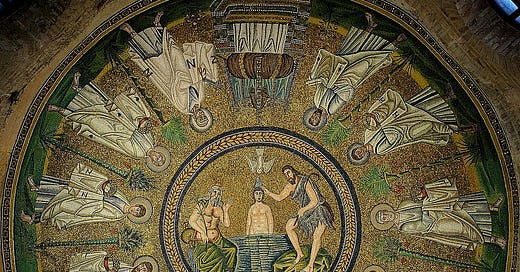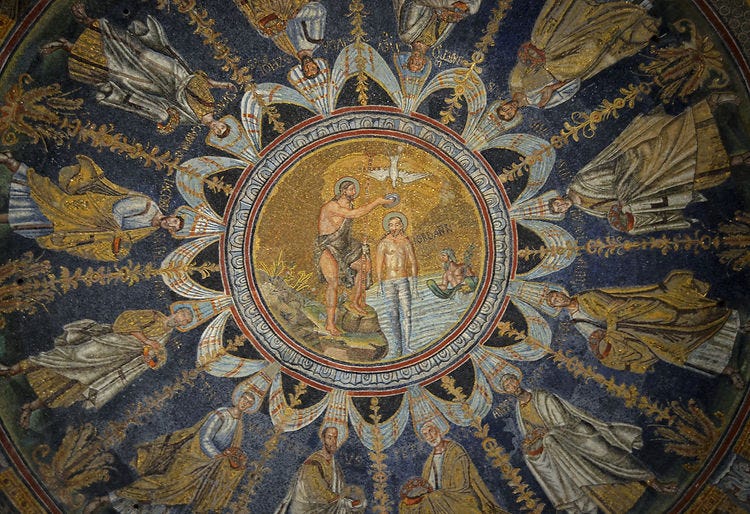A Tale of Two Baptistries
Brief Thoughts on the difference between the two major baptistries of Ravenna.
In the city of Ravenna there are two Baptistries, largely similar in design in shape. Both are octagonal structures capped with a dome. At the top of the dome, both have mosaics of the Baptism of the Lord. One key difference exists between these two mosaics, however: Christ's Beard or lack thereof.
The Baptistry that portrays a bearded Christ is the older of the two. It was built as part of a larger Basilica complex on the orders of the local bishop. Fifty Years later, a second Baptistry would be built, also part of a larger construction project. This time under the orders not of the Bishop, but of Theodoric the Great, Ostrogothic King of Italy. Theodoric and his Ostrogoth settlers were Arian Christians, holding to the belief that Christ was a creation of God the Father and therefore subordinate. Arianism was slightly more than a theological dispute between the Ostrogoths and their subjects.
The Goths were first Christianized as Arians by Bishop Ulfilas. As some sources have it, it was Bishop Ulfilas who created the Gothic Script so as to be able to translate the Bible into Gothic. Gothic civilization, it could be said, began with Arianism.
To be Gothic was to be Arian. To be Arian was to be Gothic. Arianism served as a marker of their foreignness, something which both sides were often keen to emphasize. Theodoric himself was a Romanophile and modelled his administration along Roman lines, respecting Roman customs and initiating an array of public building projects. Yet, in construction or mintings where his image is portrayed, he is always depicted in the Gothic fashion: mustachioed rather than clean shaven.
As part of his Roman esque building program, Theodoric the Great would build for himself an Arian Basilica in Ravenna to rival the Chalcedonian one already extant. He even went so far as to have a Baptistry built in the mirror image of the great Baptistry of the Chalcedonian Christians.
Theodoric would only make one change in the design. In the mosaic decorating the top of the dome, Christ is depicted as clean shaven at His Baptism instead of bearded like in the Chalcedonian Baptistry. Having Christ clean shaven, placed emphasis on Christ's youth and inexperience at the moment of His Baptism, a subtle nod towards the idea that Christ was created rather than co-eternal with the Father.





Always include dates as much as possible when writing history, it helps put the story in context.
This was a great read, especially the point about how the beardless Christ visually signals his subordinate position to the bearded God the Father. It’s a fascinating example of how early Christian art didn’t just borrow from antique iconography, but it actively reworked it. The philosopher’s beard, once a marker of wisdom and authority, gets reassigned in a new theological key. A clever visual shift with deep conceptual roots.